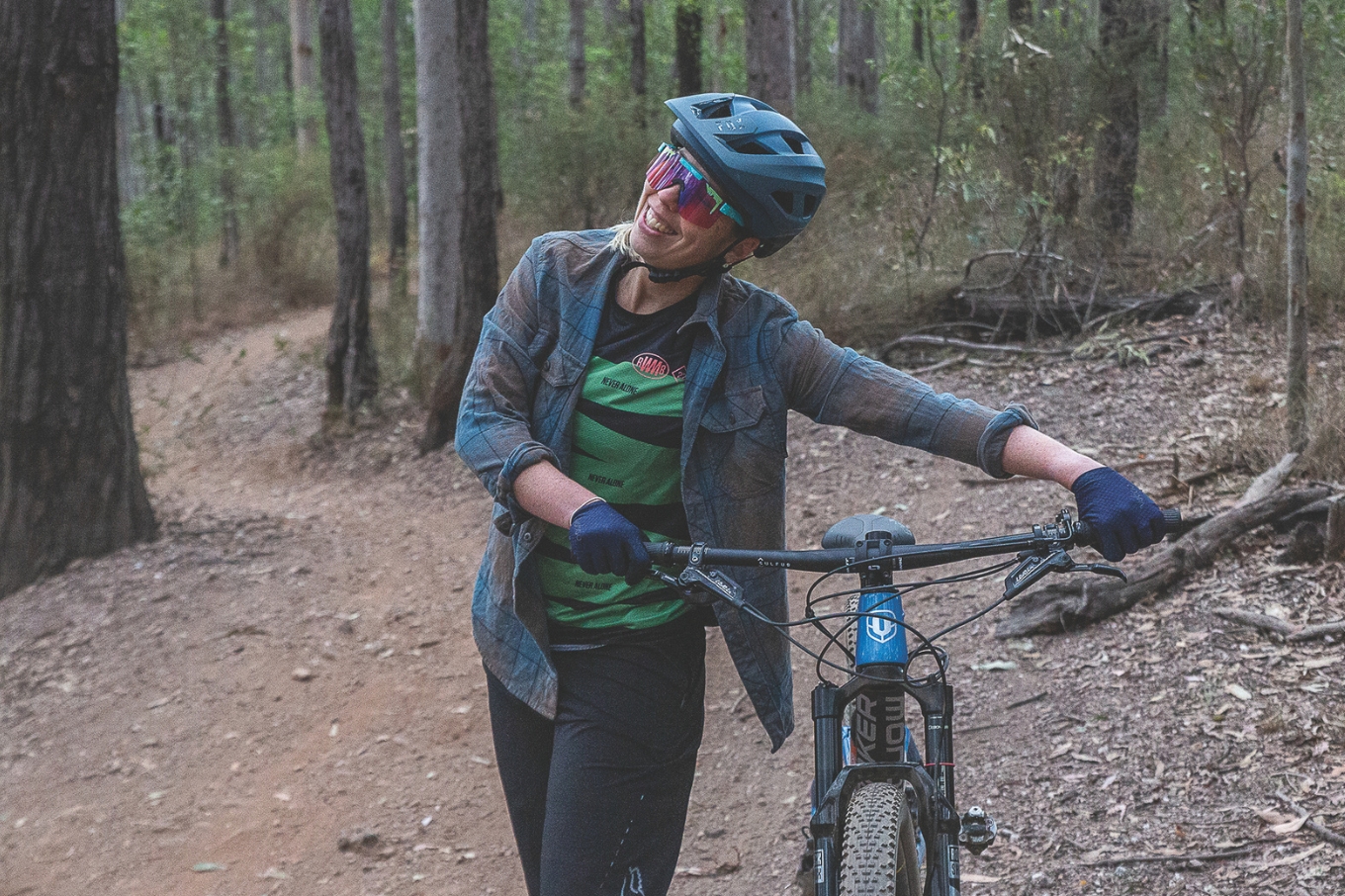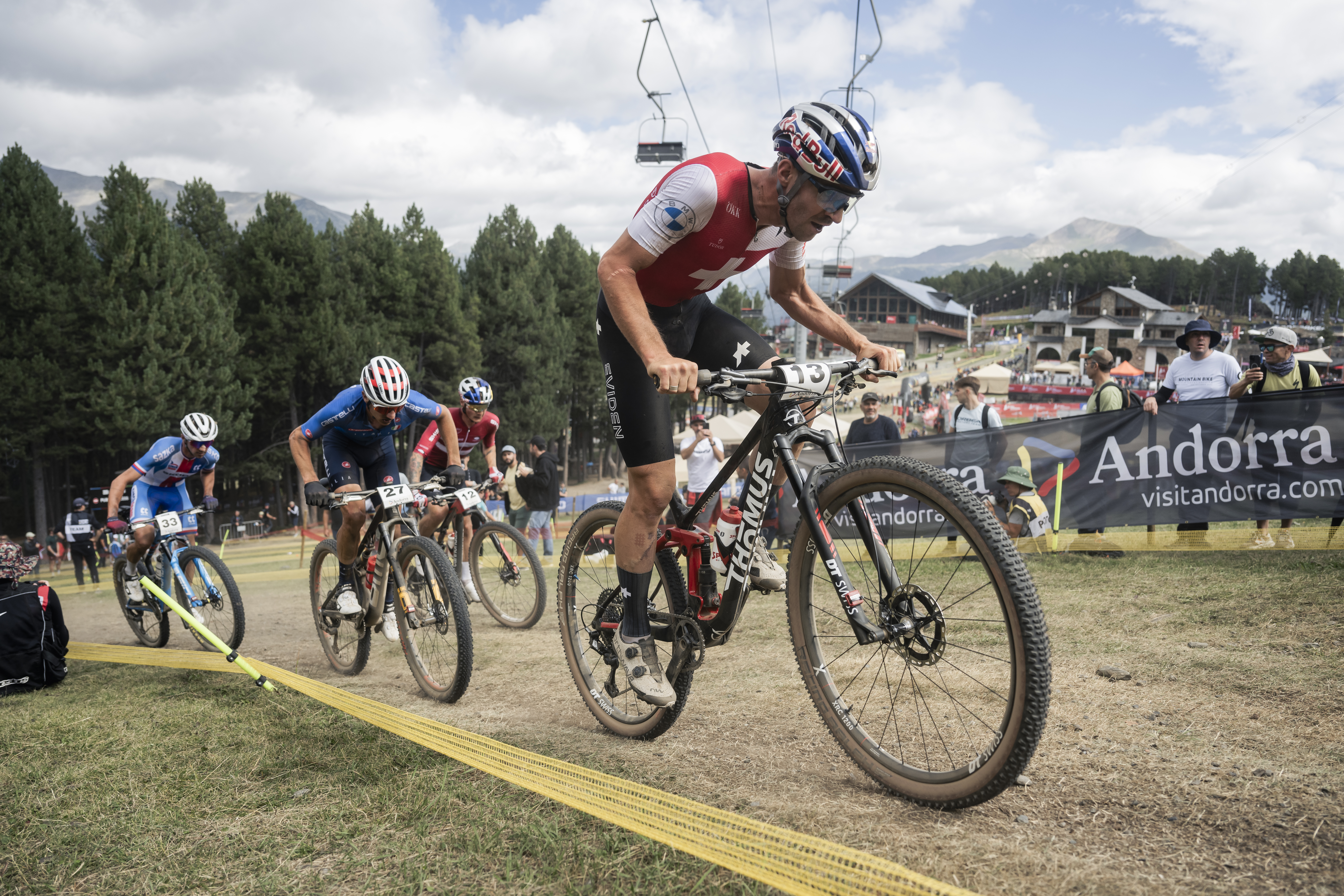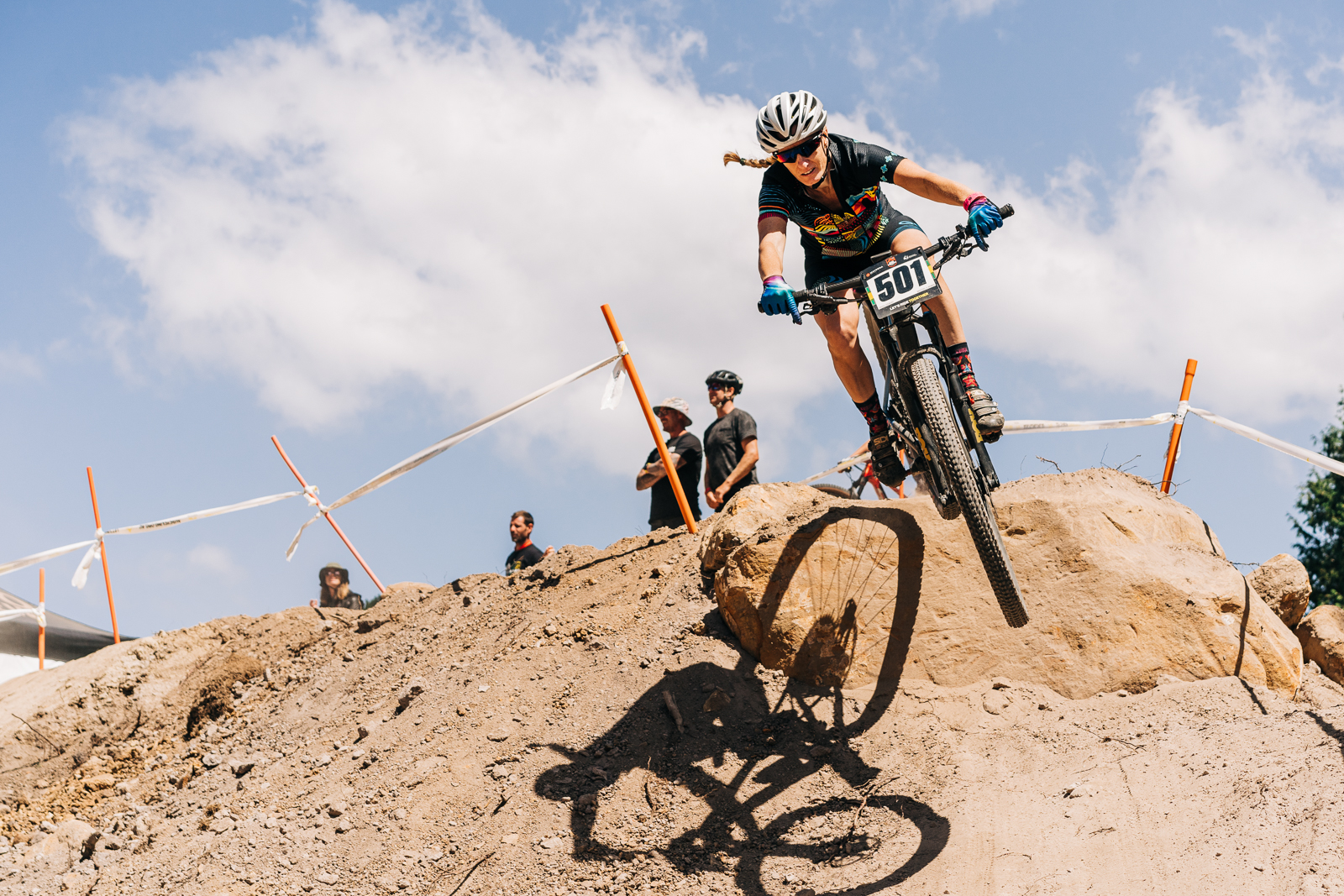Crazy fact: we have all been born. This article discusses the changing evidence of fitness during the pregnancy and postpartum period. If you’re not a person who plans on becoming pregnant that’s fine, this article is still for you: support your partner, family and friends in their pregnancy journey with a little more knowledge, especially if they enjoy cycling.
Because pregnancy takes literally forever (most of a year), it’s broken down into three ‘trimesters’ with different characteristics of each, so we will discuss the key factors of each and how to best manage activity throughout pregnancy. Please note, while exercise has proven to be safe and effective for athletic individuals who become pregnant, there are a discrete group pf pregnant women who will be contraindicated from activity (ie: placental abruption, uncontrolled type 1 diabetes, vasa previa, cardiorespiratory disease). Always discuss training and fitness through pregnancy with your health care provider.
Benefits of keeping active when pregnant include preventing excessive weight gain, reduction in rates of preeclampsia, gestational diabetes, and better mental health outcomes, and potentially a better labour experience.
Trimester 1: 0-13 weeks
Congrats on the two line, what a joyous time! Except for many people it really kind of sucks. The first trimester is a time of rapid cellular division, otherworldly fatigue, wild hormonal and mood swings, and commonly the time when ‘morning’ (or all day, let’s be honest) sickness will be the most prevalent. It’s also the time when you look the least pregnant and with the highest rates of miscarriage, so often people will withhold public announcements until the second trimester.
While you may not be showing at this time, the foundational parts of the baby are all being built: the lungs, heart, brain are all developing; as well as important bit of infrastructure—the neural tube. The reason this is important is because the neural tube has a finite period of development, which is assisted by the ingestion of folic acid (so get onto a prenatal vitamin asap!) But also because overheating can lead to an increased risk of foetal heart problems and neural tube defects throughout this time.
For those pregnant cyclists who get a break between vomits and can peel themselves off the couch, mountain biking is a safe option as the baby is snug in the pelvis.
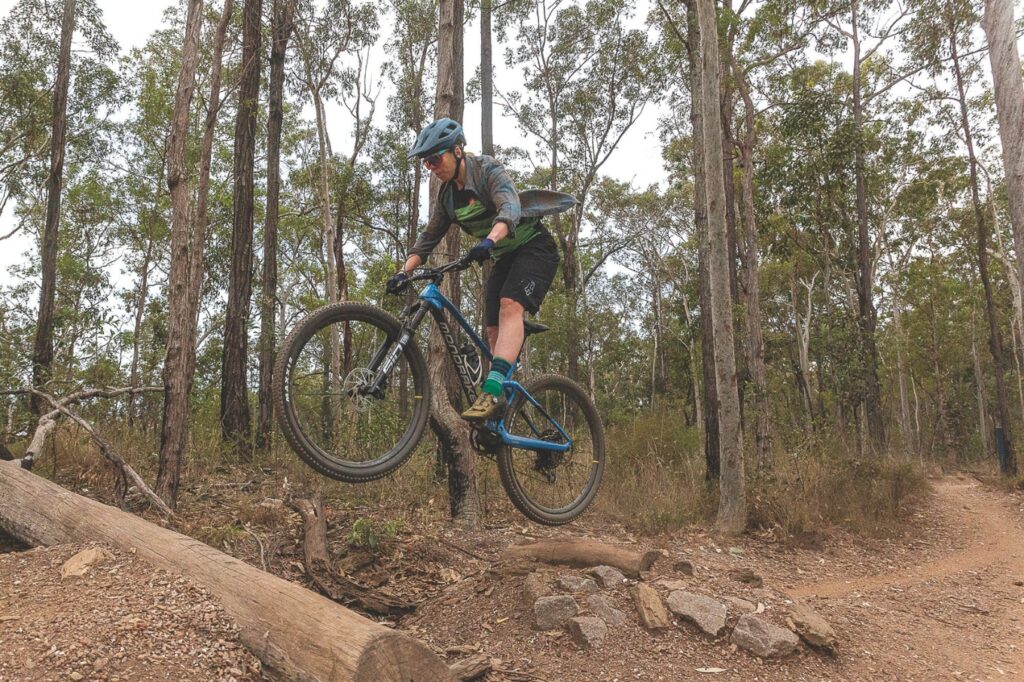
The changes in hormones can also mean that our regular feedback mechanisms can be a little out of whack throughout pregnancy and this can start early: for example increased progesterone can augment respiratory rate upwards of 48% higher than your non-pregnant rate! So using ventilatory threshold to measure effort becomes difficult. In my experience, using respiratory effort and RPE to try and predict intensity was useless in pregnancy, what felt like threshold was actually tempo in terms of wattage and heart rate response.
Instead, look to heart rate to assess your bodies response to exercise. Understanding my own HR zones allowed me to train safely in a zone in which I wouldn’t overheat.
Bike Modification: it’s unlikely you will need bike modifications at this stage, though in subsequent pregnancies you may start to ‘show’ a bit earlier, perhaps even in the first trimester.
Exercise Modification: Stay away from prolonged efforts in the heat, but you don’t have to just train inside: dangerous core body temps are >39.5 degrees, which has been proven very difficult to reach if being mindful of effort, keeping intensity to ‘moderate’ and avoiding maximal work. Rely on a range of metrics to assess your bodies response to the workload: if in doubt train inside with a fan or air conditioning.
Key takeaways: X-rays and pregnancy don’t mix, so while it’s a safe time to ride a risk assessment is key. You may feel like garbage, you don’t win medals for being pregnant so take the load off if you need to reduce exercise in this trimester. However, this is probably the safest time to get on trails for the less confident rider (due to baby located in pelvis) you may just feel like lying on the couch.
Trimester 2: 14-27 weeks
For some people this is the glorious second trimester. Most pregnancy websites advertise that all the morning sickness will go away, you will feel amazing and full of beans as your uterus and baby starts to grow larger and exit the pelvis.
It’s important to know that this isn’t for everyone: some people get the spiky end of the pineapple and feel sick for ten months, and the onset of pregnancy-related pain or complications can occur at any stage. That being said, a study of pregnant athletes found that of those who continued to train, the second trimester yielded the highest training volumes of the pregnancy.
Staying out of the heat and managing hydration remains important in this trimester, it’s a time of intense physical growth of the foetus and mother. It’s likely you will be looking for alternative clothing options through this trimester as pants begin to feel tight and increased abdominal and breast size can render any race-fit kits parked for the time being. As the uterus expands above the pelvic symphysis, many exercise guidelines warn against any exercise with contact or falls risk. For some, this will mean heading inside on the trainer, but many mountain biking mums to be continue to ride trails with additional risk assessments in place.
Many pregnant athletes will notice uterus ‘tightening’ or Braxton hicks contractions from the second trimester onwards, and they can be increased with too much activity or dehydration, so keeping intensity in check and hydration levels high is important. The flip side? Your bladder is occupying rapidly decreasing real estate and all this hydration means that if you plan to continue riding outside, you are likely to get well acquainted with bush-wees.
Bike and Kit Modifications: this may be a good time to flip your stem upwards and raise your handlebars, but many riders can exist on standard cockpits until later in pregnancy. The aggressive position of my road bike meant that in order to reduce Braxton-hicks and bladder discomfort in the second trimester, I required a more upright pedalling position.
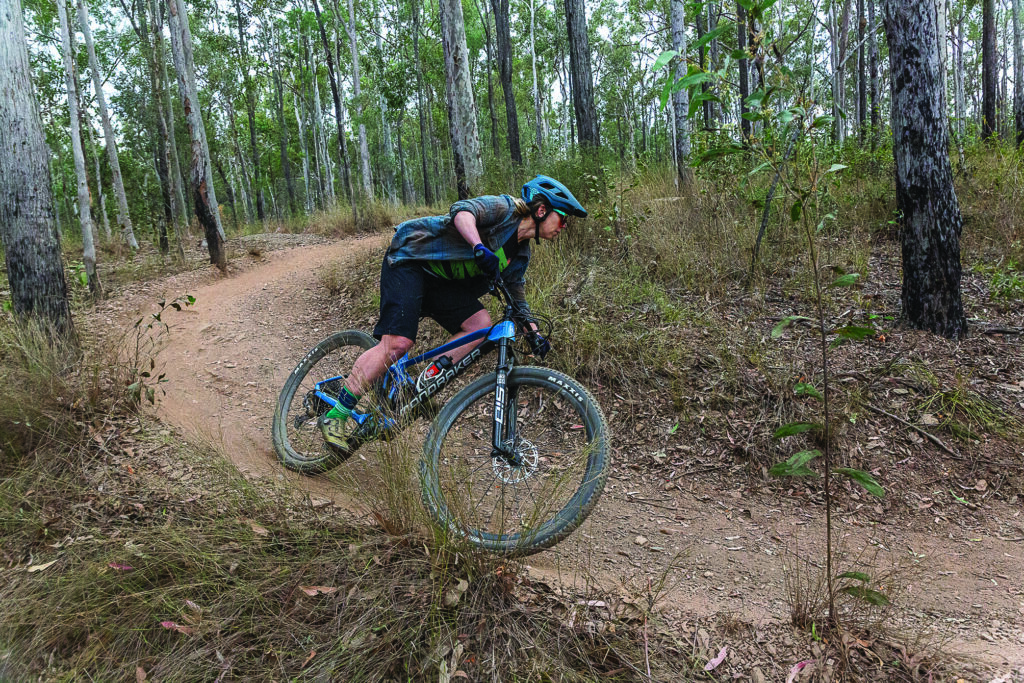
Exercise Modification: Many pregnant women find that they can increase duration and intensity this trimester, however this may be offset by an increasing size. While hitting VO2 efforts and max heart rates is still not recommended by most studies, increased time just under threshold (or up to 80% of max heart rate) has been tolerated well by many pregnant women. As always, keep the RPE in check and reduce intensity or stop if you experience any concerning symptoms.
Key takeaways: Keep reassessing your balance and comfort on trails if still voyaging out on trails, and cultivate a good ear when it comes to listening to your body.
Trimester 3: 28-40 (or 41…or 42 weeks)
This is it, the final countdown. The time when sleep gets scant, ankles get swollen and just getting off then couch elicits groaning. But if you still have the go ahead from your care provider you can continue to exercise, and in the case of many other rad mothers I know, right up to the day you give birth.
As you get larger, the upwards pressure on your ribs means that your breathing rate, already affected by hormones, can be further diminished. As you increase in size your centre of gravity shifts and you may notice pelvic girdle pain or back pain to go along with this. You may have increased Braxton-hicks contractions regardless of exercise: but too much activity can really increase their rate, so resting becomes as important as moving.
For those who continue exercising with supervision of their care provider, there is no increased risk of adverse events during pregnancy, no risk of small for gestational age infants, reduced risk of prematurity, plus less maternal fat mass increase compared to controls (Bentham, KS). If you’re still comfortable out on the trails: go you! Most rad riding women I have spoken with were readily able to tone down their riding and ride within their perceived limits and modify their riding based on feel. One key downer is that the recommended weight gain during pregnancy is between 11-16kg (for ‘normal’ BMI), so expect a significant and rapid reduction in w/kg when climbing.
If you choose to stay active but you aren’t keen on the trails, riding indoors, walking and gym work can be slightly more ‘controlled’ workout modalities. Being kind to yourself and letting go of training volume, TSS, CTL and power numbers is key: if you’re still exercising at this point then you’re super human! If you need to modify things, go for it. The best part? While it’s the most uncomfortable, hot, hard and sometimes painful part of pregnancy, it also marks the final stages before you get to meet your next generation shredder.
Bike and Kit Modifications: All the mods: at this stage a flipped, high stem paired with a more supportive saddle (to account for more upright position), increased spring rate for your suspension, and easier gearing if possible. At this stage, you wear whatever fits, so that meant a lot of my partners ‘active wear’ t shirts with my bibshorts (that managed to stretch through the whole 9 months).
Exercise Modification: Getting out is a win, and hills were so difficult and slow that I avoided excessively hilly routes. I cut back on the downhill trails and cruised through our local cross country trails, as well as using commuting and bike path rides.
Key takeaways: Your body is undertaking a marathon, so listen to it. If you need to rest, rest. If you have energy to ride, awesome! You need extra calories to support a pregnancy at this stage, so make sure you fuel well even if your rides are much shorter and less intense than pre pregnancy.

